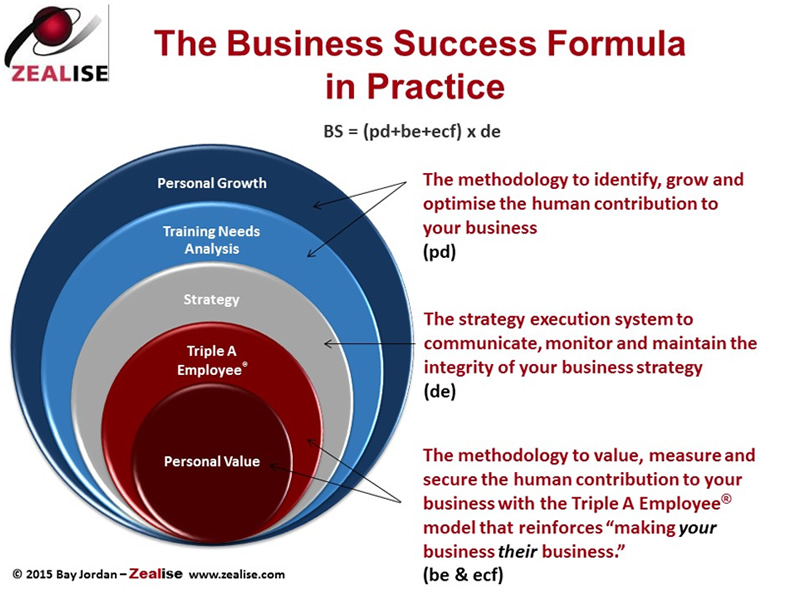John Spence’s business success formula has a fundamentally people-centric core. I have, however, reworked it in a way that emphasises this and so enables you to put it into practice more easily. So let me show you how.
The restated formula is:BS = (pd+be+ecf) x de
Where:
BS = Business Success
pd = personal development
be = behaviour exhibited
ecf = extreme customer focus
de = disciplined execution (accountability)
This people-centric restatement of the formula effectively highlights something you already inherently recognise, and may even often express, when you say, “Our people are our greatest asset.” This statement is a bit of a cliché but it is more fundamentally true than you have perhaps ever realised. Indeed the great management paradox is that we keep referring to people as our greatest assets yet persist in accounting for, managing and treating them as costs.
This makes it imperative that you start accounting for your employees as the assets they are. Only then can you end the ingrained behaviour that, for example, justifies changes and calculates the return on investment (ROI) on the basis of “headcount reduction.” And accounting for people as assets is not as difficult as you may have thought. I have developed a method for doing so.
This methodology has three distinct, but integrated, elements:
- The valuation of people for the inclusion on the balance sheet or a notional balance sheet.
- A new employee ownership model that makes ALL employees owners of the business with a stake equal to their asset value, and that therefore requires no equity and has no cost to either your organisation or the employee.
- Incentive remuneration paid as a ‘labour dividend’ on the same basis as an equity dividend and at the same rate. This can apply even if there are no shareholders and is cost neutral as the money would come out of the traditional ‘bonus pool.’
This provides a solid foundation for a total offering that massively enhances the likelihood of success, delivering all the elements of the Business Success Formula. The following diagram shows how.

The diagram very effectively illustrates the virtuous circle of the formula and the reinforcing aspect of its independent and inter-dependent elements. As people develop themselves they will increase their asset value, inevitably enabling them to make a greater contribution to the organisation and help execute strategy effectively. Note that, per the formula, disciplined execution is the multiplier and this will be boosted by their ownership stake which will make them more naturally inclined to do so.
How’s that for a better approach to talent management? If you are fighting the talent war and bemoaning the lack of appropriate skills, what better way can you think of developing them? If you are excited by the possibilities this approach offers, don’t hesitate to follow up to find out how we can help build and sustain the transformation of your organisational performance. Zealise offerings not only provide the key to valuing your people as assets, but the support you need for all the different parts of the Business Success Formula.
Bay is the founder and director of Zealise, a company created to help larger small to large business organisations to properly value their people and thereby inspire them to optimise their self-worth and so engage them that they transform organisational performance and bottom-line results. Bay is also the author of several books, including “Lean Organisations Need FAT People” and “The 7 Deadly Toxins of Employee Engagement.”
